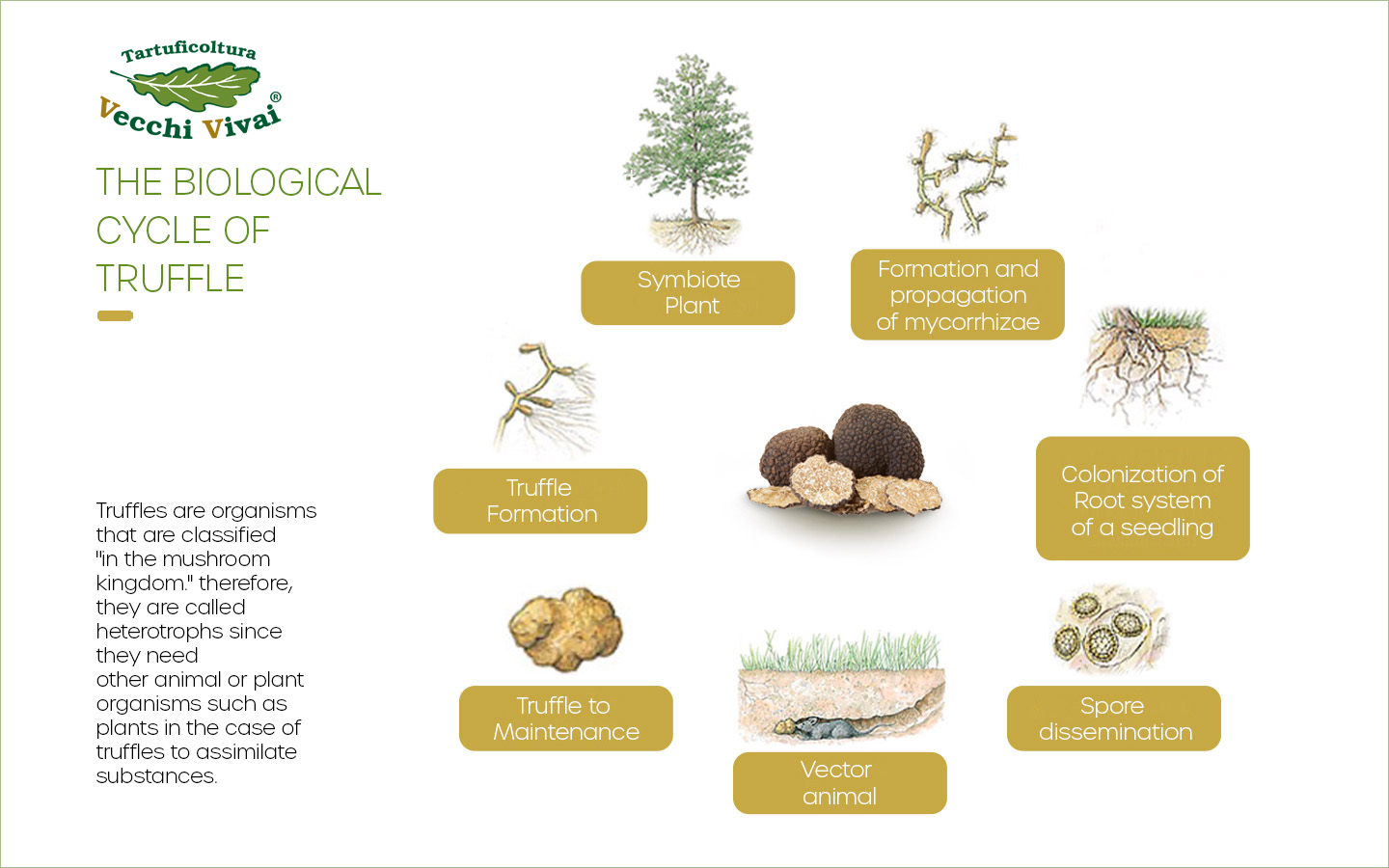The Main Characteristics of the Truffle
Truffles are organisms that are classified in the "mushroom kingdom."Fungi lack chlorophyll and cannot synthesize organic substances such as sugar, starch and cellulose since they cannot carry out the process of chlorophyll photosynthesis.
Therefore, they are called heterotrophic since they need other animal or plant organisms such as plants in the case of truffles to assimilate these substances.
Plants, on the other hand, are autotrophic organisms, that is, capable of producing all nutrients. Fungi are divided into three groups:
- Parasites: assimilate organic substances from living animal or plant organisms
- Saprophytes: assimilate organic substances from dead or already decaying animal or plant organisms
- Symbionts: coexisting with living organisms exchanging nutrients and benefiting both
Belonging to the latter group are truffles, which establish symbiosis with forest plants at the root level through mycorrhizae are thus the union point of exchange between the fungus and the plant and can be of three types: Endomycorrhizae, Ectoendomycorrhizae and Ectomycorrhizae as in the case of truffles where the hyphae of the fungus penetrate between root cells.
Truffle mycorrhizae form after some carpophores rot and decay in the soil or are eaten by animals, which in turn contribute to the dissemination of spores in the environment. Once the spores come in contact with the roots of a symbiont plant they germinate and give rise to a mycelium capable of contracting symbiosis at the root level with the latter.
Spores are found in great numbers within the truffle and more specifically in the gleba, enclosed within asci and hence called ascospores, in fact the truffle is a tuberaceous plant belonging to the class of ascomycetes. The spores are also a key element in recognizing the various species of Tuber, as they differ from each other within the asci in color, shape and size.
The entire cycle of the truffle takes place entirely underground and is therefore a hypogeous fungus unlike other fungi that fruit above ground referred to as epigeous such as the cep (Boletus Edulis). The fungus once the symbiosis is established needs a whole range of factors to fructify, ranging from the age of the plant to soil and climatic conditions.
Truffle mycorrhizae form after some carpophores rot and decay in the soil or are eaten by animals, which in turn contribute to the dissemination of spores in the environment. Once the spores come in contact with the roots of a symbiont plant they germinate and give rise to a mycelium capable of contracting symbiosis at the root level with the latter.
Spores are found in great numbers within the truffle and more specifically in the gleba, enclosed within asci and hence called ascospores, in fact the truffle is a tuberaceous plant belonging to the class of ascomycetes. The spores are also a key element in recognizing the various species of Tuber, as they differ from each other within the asci in color, shape and size.
The entire cycle of the truffle takes place entirely underground and is therefore a hypogeous fungus unlike other fungi that fruit above ground referred to as epigeous such as the cep (Boletus Edulis). The fungus once the symbiosis is established needs a whole range of factors to fructify, ranging from the age of the plant to soil and climatic conditions.

Commercial truffle species
Request info without obligation
Fill out the form
Informative
We and selected third parties use cookies or similar technologies for technical purposes and, with your consent,
also for other purposes as specified in the .
If you close this banner with a tick or click on "Decline", only technical cookies will be used. If you want to select the
cookies to be installed, click on 'Customise'. If you prefer, you can consent to the use of all cookies, including
cookies other than technical cookies, by clicking on "Accept all". You can change your choice at any time.